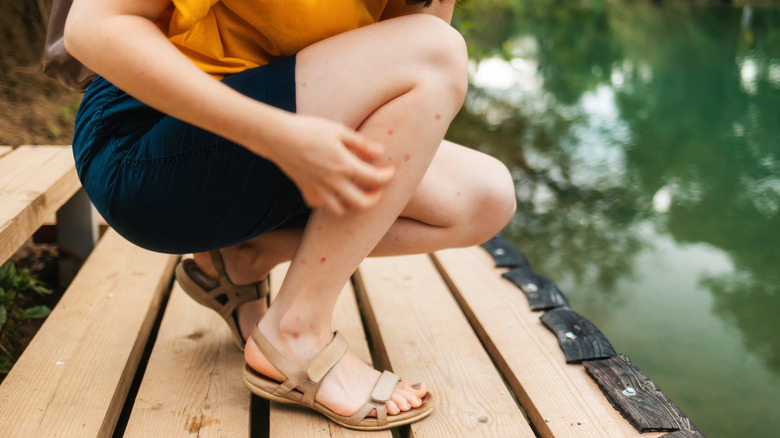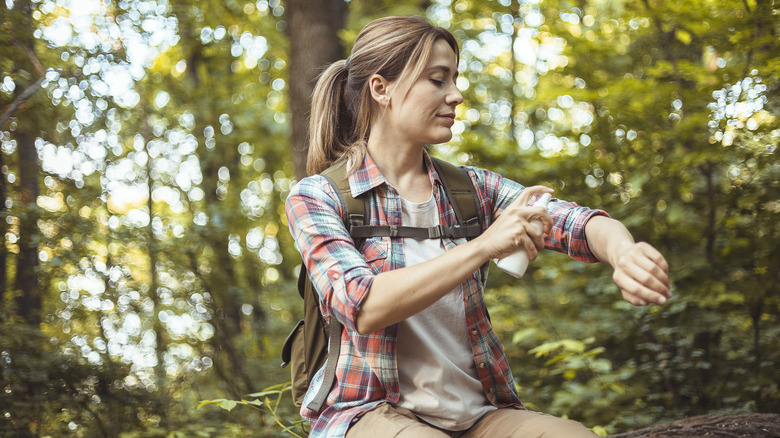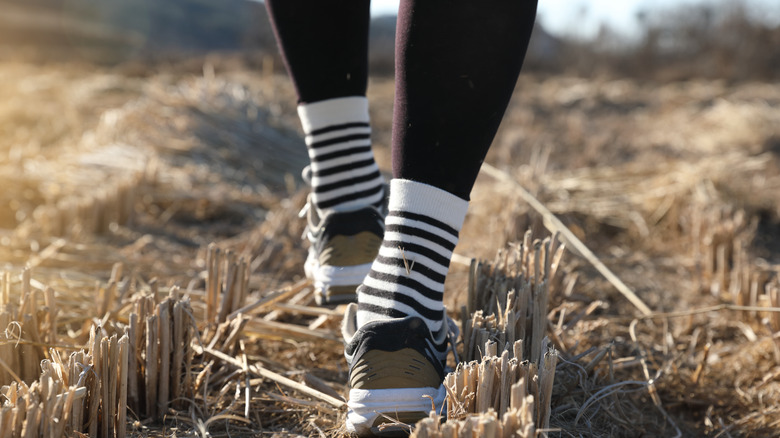Use These Hacks To Protect Against Fleas While Traveling
From blood-sucking bed bugs to disease-carrying cockroaches, the range of creepy crawlers you may encounter during your travels is hair-raisingly diverse. Ticks and worms pose additional threats, as do mosquitoes. And while they're typically associated with pets, fleas can also become unwelcome companions during your trips. They're bloodsuckers that primarily feed on your furry friends, but they occasionally feast on humans. Flea bites, anyone?
Fleas don't tend to stay on the human body. Instead, they prefer to linger on animal fur (and even home furniture like carpets and beds) in order to reproduce. But flea bites can prove to be a real nuisance, not just because they form itchy red bumps on the skin, but also because they can cause allergic reactions. What's worse is that they are notorious for transmitting a host of diseases, including the plague, typhus, and cat scratch disease, per the Centers for Disease Control and Prevention (CDC).
Fleas thrive in warm, humid conditions, so breakouts tend to occur during spring and summer. However, with over 2,500 flea species in existence, more than 300 of which are found in the U.S. alone, fleas are present in virtually every country, so there's no escaping these pests. Fortunately, you can do plenty to protect yourself against them. Using repellent, wearing protective clothing, and treating your belongings with pesticides are effective strategies to fend off fleas.
Repellents and pesticides are the way to go
Protecting yourself from fleas is as easy as applying repellent on your skin. The CDC advises opting for repellents that are part of the Environmental Protection Agency's (EPA) roster, as they are formulated to be safe for use on everyone, including children and pregnant women. EPA-registered ingredients include, but are not limited to, catnip oil (derived from the mint plant family), oil of citronella (which conceals scents that lure pests), and DEET (known for bite protection). Keep an eye out for these components when shopping for repellents to ensure your defense against fleas.
For an additional layer of protection, you may also want to look into treating your clothing and other belongings with permethrin, a safe pesticide derived from chrysanthemum flowers. Exercise caution during application, as experts warn of potential harm if it contacts the skin. As senior scientist Dr. Michael Hansen of Consumer Reports noted: "It's an endocrine-disrupting compound. If it gets into your system, there can be effects on the hormonal system." Ensure you're not wearing the clothing during application, and limit usage only on outer pieces like shirts, jackets, pants, socks, and boots — never underwear. Experts also advise following the product label to ensure proper application, noting that treatment usually entails coating the entire garment with the product. The good news is permethrin remains effective for up to six washes, eliminating the need for frequent reapplication. Alternatively, you can opt for commercially available clothing pretreated with permethrin to save yourself the hassle.
Keep yourself covered
In addition to applying repellent and treating clothing with pesticides, another effective measure to safeguard against fleas is wearing protective attire that covers most of your skin. Considering how flea bites are often concentrated on the lower body, see to it that you are clad in thick socks and pants, especially if you're traveling to woodland areas, where fleas usually thrive.
While fleas are not known for living on clothing for extended periods, they can still find a way to latch onto your body through thin fabrics like stockings or open weaves like cardigans and sweaters, so it's wise to steer clear of these types of garments. Instead, opt for pieces that go the extra mile in providing enhanced coverage, including tops with fitted necklines or pants with snug hems. They may be a tad bit uncomfortable for wear, but they minimize exposed skin that might be susceptible to flea bites.


